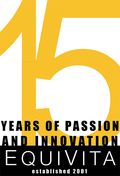It seems silly if you think about fitness as it applies to your brain in the same way that we consider fitness of the body. For the body we tend to think fitness is first about appearance, not its function, and then when we consider the function often it is in terms of completing something specific. Imagine applying this same way of thinking to your brain: you completed the course/test/certification and now you don't need to do anything with your brain. And for training the brain and its ability to process information or recall detail, we could set limits on how far we really wanted to go with the capacity - substituting 'smart' for strong' in phrases like " I don't want to get too strong."
If you shifted your paradigm and started thinking about training your body as your mind, what would you change? You could still have achievement goals for function (bench press your body weight) or appearance (shapely shoulders) but those goals would never be in conflict with your ongoing health. As with your brain, your body would first need the fitness to support your lifestyle. Because the body doesn't provide as fast a disruption to our daily lives as the brain would if we got our priorities misaligned, it requires far more conscious attention and focus. But with the right focus, incredible things can be achieved.
Living tissue has an amazing ability to adapt to demands that are placed upon it. Our limitations typically arise not from the natural limits of the body and brain, but from our own ability to train in such a way that it maximizes our potential. The body's goal of the easiest possible way means it requires continual reminders to be encouraged to develop. With the brain and body, once is not enough and, as Tami and Carla point out this month, many times it just takes lots of practice.
As always, let me know how I can help.
Adam

 RSS Feed
RSS Feed
